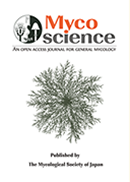59 巻, 4 号
選択された号の論文の9件中1~9を表示しています
- |<
- <
- 1
- >
- >|
Editorial
-
2017 年 59 巻 4 号 p. v-vi
発行日: 2017年
公開日: 2023/03/07
PDF形式でダウンロード (286K)
Full paper
-
2017 年 59 巻 4 号 p. 263-267
発行日: 2017年
公開日: 2023/03/07
PDF形式でダウンロード (1467K) -
2017 年 59 巻 4 号 p. 268-276
発行日: 2017年
公開日: 2023/03/07
PDF形式でダウンロード (3870K) -
2017 年 59 巻 4 号 p. 277-287
発行日: 2017年
公開日: 2023/03/07
PDF形式でダウンロード (3138K) -
2017 年 59 巻 4 号 p. 288-293
発行日: 2017年
公開日: 2023/03/07
PDF形式でダウンロード (1128K) -
2017 年 59 巻 4 号 p. 294-302
発行日: 2017年
公開日: 2023/03/07
PDF形式でダウンロード (1078K) -
2017 年 59 巻 4 号 p. 303-309
発行日: 2017年
公開日: 2023/03/07
PDF形式でダウンロード (1159K)
-
2018 年 59 巻 4 号 p. 310-318
発行日: 2018年
公開日: 2023/03/07
PDF形式でダウンロード (876K)
Note
-
2017 年 59 巻 4 号 p. 319-324
発行日: 2017年
公開日: 2023/03/07
PDF形式でダウンロード (386K)
- |<
- <
- 1
- >
- >|
